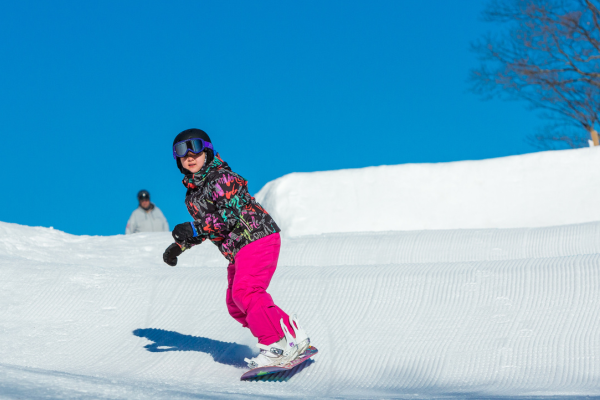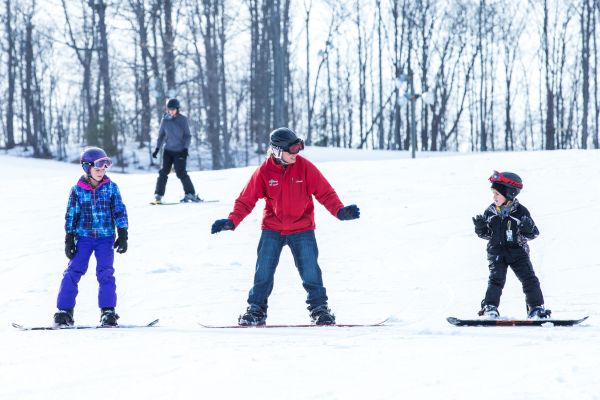Stay Warm on the Slopes: How to Layer for Skiing and Snowboarding

Preparing for a day on the slopes at Treetops Resort isn’t just about strapping on your skis and heading downhill. Dressing correctly is key to staying warm, dry, and comfortable throughout the day. The secret? Mastering how to layer for skiing and snowboarding. By combining the right base, mid, and outer layers, you can tackle winter conditions like a pro.
The Three-Layer System: A Simple Breakdown
- Base Layer: Wicking Moisture Away
The base layer is the foundation of your ski outfit. Its job is to manage moisture by pulling sweat away from your skin.- Material: Choose fabrics like synthetic blends or merino wool. Avoid cotton, as it traps moisture and leaves you feeling cold.
- Fit: A snug fit is key for moisture-wicking efficiency without restricting movement.
- Options: Thermal tops and leggings are classic choices. Merino wool, though pricier, offers excellent warmth and odor resistance.
- Mid Layer: Providing Insulation
The mid layer traps your body heat to keep you warm, even in frigid conditions.- Material: Fleece, down, or synthetic insulation work well. Thicker materials are better for colder days, while lightweight options suffice for milder conditions.
- Fit: Slightly looser than the base layer, allowing freedom of movement while still retaining warmth.
- Options: Fleece jackets, lightweight insulated vests, or down sweaters are all effective mid-layer choices.
- Outer Layer: Shielding Against the Elements
The outer layer, often called the shell, protects you from wind, snow, and moisture.- Material: Look for waterproof and windproof fabrics with good breathability, like Gore-Tex or similar technologies.
- Features: Key details include sealed seams, adjustable hoods, and underarm zippers for ventilation.
- Options: Ski jackets and pants with water resistance and breathability ensure comfort during physical activity.
Book Your Ski Trip at Treetops Resort
Ski into winter fun at Treetops Resort—cozy stays and unforgettable adventures await!
Accessorize for Complete Protection
Beyond the three layers, accessories are vital for covering exposed areas:
- Headwear: Always wear a helmet for safety and warmth. Add a thin, moisture-wicking liner underneath if extra insulation is needed.
- Eyewear: Goggles protect your eyes from wind and UV rays, while ensuring clear visibility on the slopes.
- Gloves or Mittens: Opt for insulated, waterproof gloves or mittens. Mittens tend to be warmer, but gloves offer more dexterity.
- Socks: Choose moisture-wicking ski socks made from synthetic blends or wool. Avoid thick socks that might restrict blood flow in ski boots.
- Neck Gaiter or Balaclava: These keep your neck and face warm while shielding your skin from windburn.
Tips for Layering Success
Do's:
- Always wear all three layers to stay prepared for varying weather conditions.
- Air out and dry your layers overnight to start each day fresh.
- Adjust your mid-layer thickness based on the weather forecast.
Dont's:
- Avoid wearing cotton in any layer—it traps moisture and cools quickly.
- Don’t over-layer, as excessive clothing can cause overheating and sweating.
- Skip wet or damp clothing; it’s nearly impossible to stay warm in wet gear.
Why Proper Layering Matters
Layering up for skiing or boarding ensures you can focus on fun, not the cold. Proper layering traps heat, manages sweat, and shields you from harsh elements, creating an enjoyable skiing experience. With these guidelines, you’ll stay cozy, confident, and ready to tackle our slopes. When you’re here, be sure to visit our Ski Shop to stock up on the best gear.
Other Articles You Might Enjoy
Boosting Attendance Means Boosting Success
In the world of association management, the annual conference is often the crown jewel of the year’s events. It’s a…
What to Wear Skiing for the First Time: A Beginner’s Guide
So, you’ve decided to hit the slopes for the first time-awesome! But before you buy your lift ticket and imagine…
What to Bring Snowboarding: Essentials and Fun Add-Ons for Your Trip
A snowboarding trip at Treetops Resort promises adventure, breathtaking views, and an unforgettable time on the slopes. But whether you’re…
What’s a Good Golf Handicap? Understanding Golf Handicaps by Age
Golf is a game of skill, patience, and continuous improvement. One of the most talked-about aspects of the game is…
Snowboarding Tips for Beginners
Are You a Beginner Looking For Snowboarding Tips? Ready to dive into snowboarding? For beginners, the sport can feel daunting…





